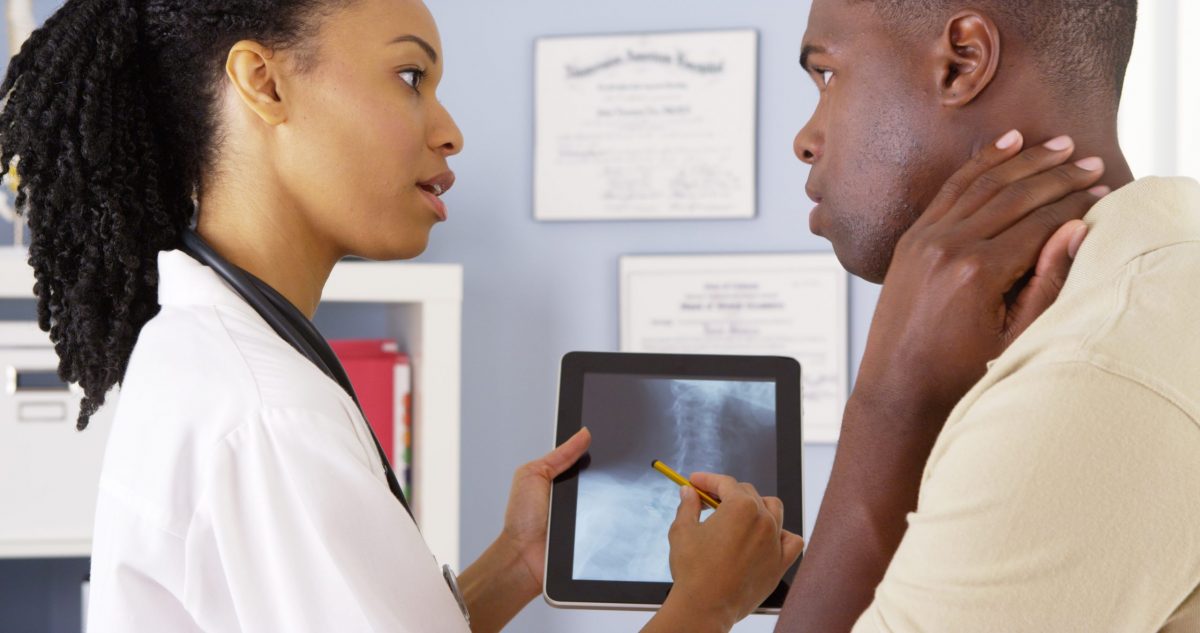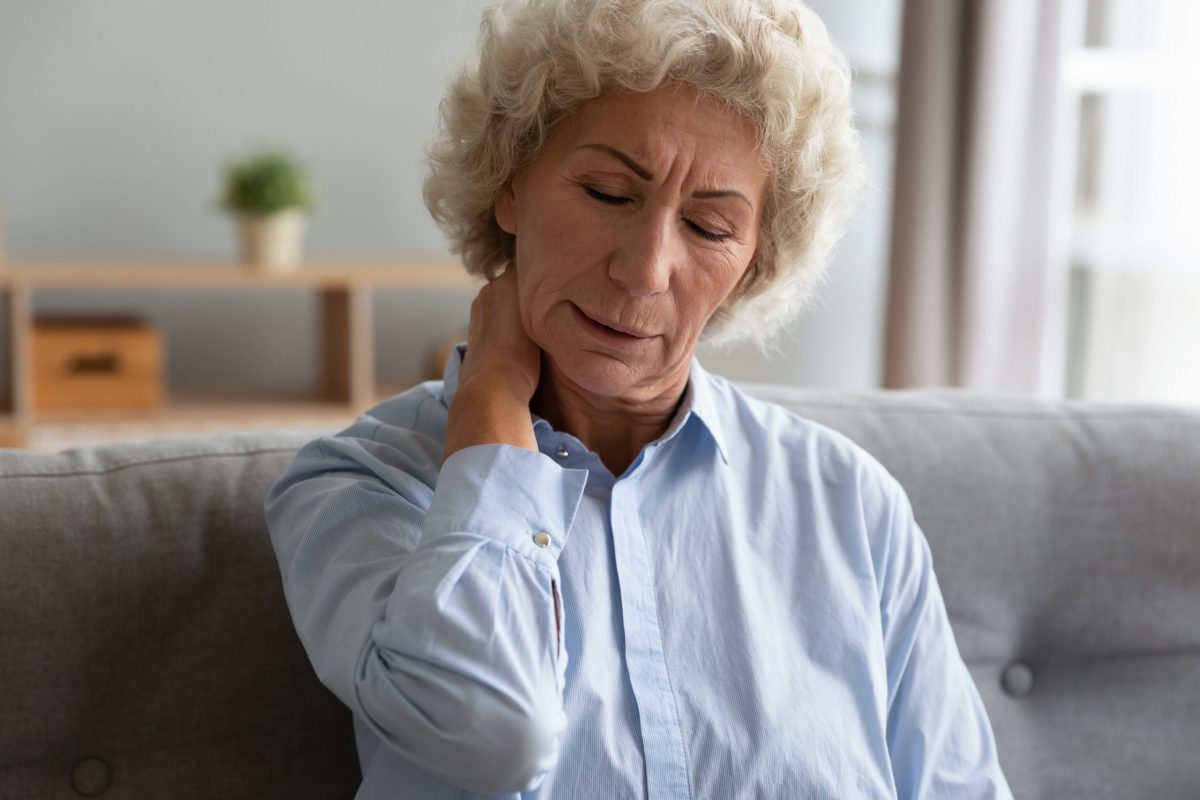
Throughout our lives, our bodies endure great strain and stress. No matter how well we take care of ourselves, inevitably there will be wear and tear to our joints. Arthritis is a common degenerative condition experienced by many adults in various joints throughout their bodies.
Most people think of arthritis in the hands, knees, shoulders, and hips, but arthritis in the neck (medically known as cervical spondylosis) may start as early as a person’s 30s. And, studies confirm that the condition becomes more common with age, with upwards of 85% of people over the age of 60 affected.
While there is no cure for arthritis in the neck, it does respond well to non-surgical and surgical treatments. The best way to determine the most effective treatment pathway is to consult with one of our board-certified Back, Neck, and Spine doctors at EmergeOrtho—Triangle Region.
Below, we delve into the basics of what this condition entails and answer fundamental questions, like “What causes arthritis in the neck?” and “How do you treat arthritis in the neck?”
Cervical Spondylosis Anatomy, Causes, and Symptoms
Anatomy
Your spine is made up of 24 different-sized bones (vertebrae) that form a canal to protect your spinal cord. Between the vertebrae are flexible intervertebral disks that act as shock absorbers. The portion of seven small vertebrae at the top of your spine that forms your neck is the cervical spine.
Cause
What causes arthritis in the neck? Cervical spondylosis is caused by inevitable wear and tear to the spine as adults age. Over time, disks lose height and water, which causes them to bulge, dry, and weaken. This results in a shortening of the discs and space between the vertebrae, causing more load on the “facet joints” of the spine. This pressure wears away the protective articular cartilage covering the facet joints. These changes are all part of spinal arthritis.
As spinal arthritis progresses, the cartilage may wear away completely, causing painful vertebrae bone-on-bone rubbing. Also, as a defense response, to stabilize the joints and reduce the painful motion, your body grows bone spurs called osteophytes. These osteophytes can narrow or block the space for the spinal cords and nerves causing a painful condition called stenosis, radiculopathy, or myelopathy.
Symptoms
 While arthritis in the neck is common, nearly half of adults experience little to no symptoms. For those that do experience symptoms, they can range from mild to severe and can include one or more of the following:
While arthritis in the neck is common, nearly half of adults experience little to no symptoms. For those that do experience symptoms, they can range from mild to severe and can include one or more of the following:
- Pain
- Stiffness
- Headache
- Sensation of popping or grinding
- Muscle spasms
- Balance loss
- Weakness in the arms, clumsiness, lack of coordination
- Trouble walking (called ataxia)
- Arm/hand/finger numbness
Non-surgical and Surgical Treatment Options
Non-surgical Treatment
In many cases, cervical spondylosis responds well to one or more of the following non-surgical treatment options:
- Physical Therapy
Special exercises, when performed regularly and under the instruction of a licensed therapist, can relieve pain and strengthen weakened muscles. Posture therapy may also be incorporated into your overall physical therapy program. - Medication
To address pain and/or inflammation, your doctor may prescribe acetaminophen, nonsteroidal anti-inflammatory drugs, and/or muscle relaxants. - Cervical Collar
This soft, padded ring wraps around your neck and allows your muscles to rest and relax by limiting your neck motion. Long-term wear can weaken your neck muscles, so this method should only be used for short periods and new (acute) injuries. - Steroid Injections
These can provide effective, short-term pain relief in suitable patients. - Ice and Heat Therapies
This is an easy, at-home method of providing pain and inflammation relief. Your doctor will provide proper care directions.
Surgical Treatment
You may be a candidate for surgery if one or more of the following apply:
- Your arthritis in the neck does not respond well to non-surgical treatment methods.
- You have a pinched spinal nerve.
- Your spinal cord is being compressed.
- You are suffering from progressive neurologic symptoms.
The type of surgical plan established for each patient depends on age, health, and symptoms. Some patients, due to their age or health status, are not good candidates for surgery. During your in-depth consultation, your doctor will determine what type of arthritis treatment is best for you.
Superior Cervical Spondylosis Relief Is Found at EmergeOrtho—Triangle Region
Although arthritis in the neck is a reality many adults must learn to cope with, we are confident that the trusted team at EmergeOrtho—Triangle Region can help you manage your symptoms and return you to your daily activities with confidence. Our ultimate goal is to help you Emerge Stronger. Healthier. Better.
To learn more, self-schedule an appointment now. Or, call us any time at (919) 220-5255.







